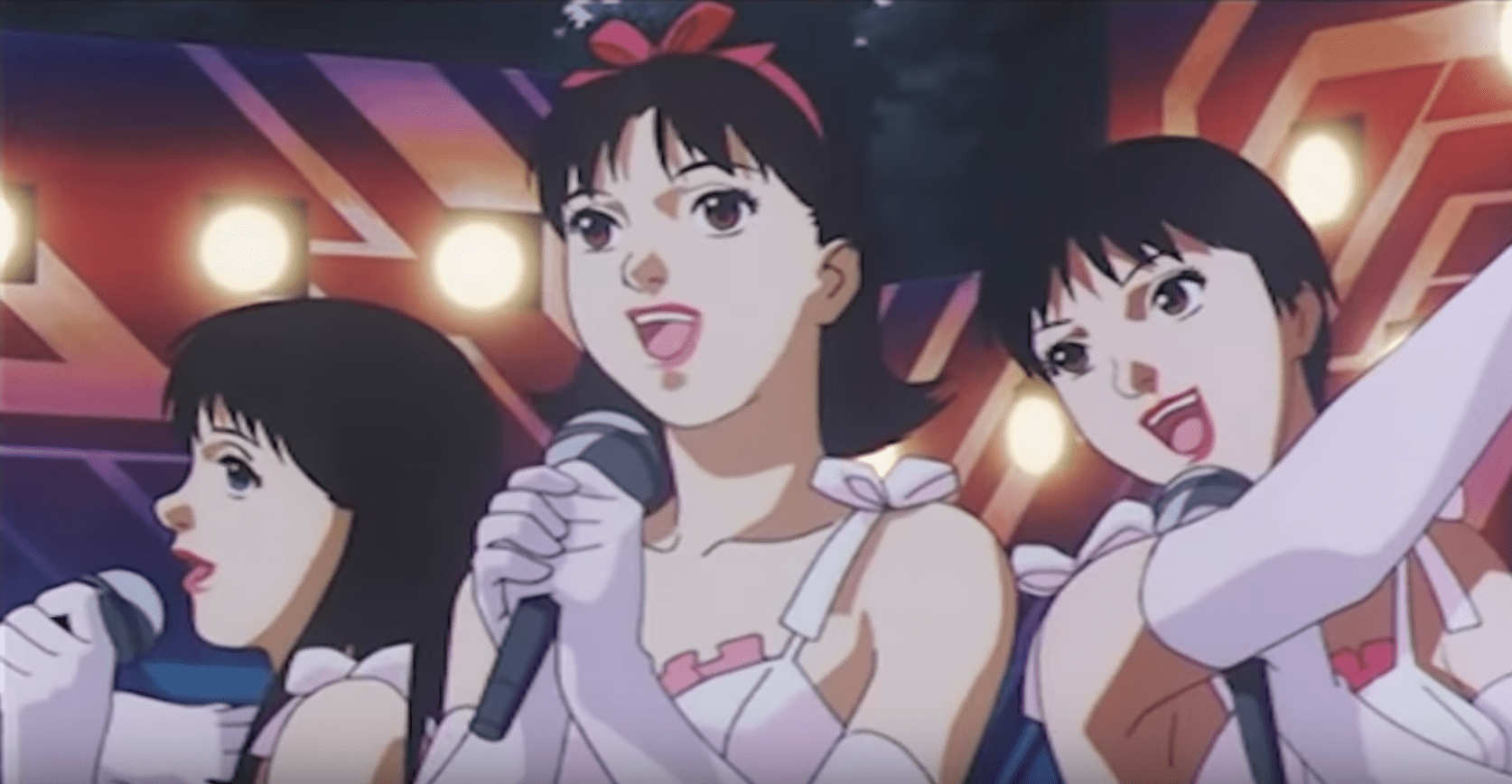Perfect Blue turns 20 this month — if you already know it, it’s time to get to know it again, and if you don’t know it… well.
The cult anime is a whip-smart psychological thriller about an idolised female pop star who pursues an acting career, only to have an identity crisis when confronted with an obsessive fan. It’s dark, disturbing and insanely beautiful, with that washed-out 90s anime sheen. Based on the novel Perfect Blue: Complete Metamorphosis by Yoshikazu Takeuchi, it was Satoshi Kon’s directorial debut. Kon started out as a painter, which isn’t surprising given the ease with which he translates complex ideas visually. No surprise, either, that some called him the Stanley Kubrick of anime.
Aside from being a treat for your eyeballs, here’s why you need to pause your Netflix schedule to rediscover Perfect Blue 20 years later.
It basically predicted today’s world of online stalking
When former pop idol Mima Kirigoe discovers a blog about her, written in her voice but by someone else, she laughs, blithely unaware of how fucked up it is. Then it sinks in. “How do they know this much?” An unhinged fan is claiming to be her, posting false information, detailing every aspect of her life. She has zero control about what’s posted. Remember: this was a whole decade before ‘catfish’ became a widely used term to describe someone who adopts a false persona online. Anyone can publish anything about anyone. Anyone can be anyone. “This isn’t true! I’m not writing any of this!” she screams at her screen.
It lays bare the creepy corners of fame and fandom
Perfect Blue casts a critical eye over Japan’s idol industry, celebrity culture, and the inherent problems with fame and fandom. And it’s all 100% still relevant. The aforementioned stalker pops up, camcorder in hand, while Mima is singing onstage. He’s the creep in the sea of fans, eyes glaring behind a greasy fringe, like Whitney Houston’s fan-stalker in The Bodyguard. Kon’s movie shows how this stalking feeds paranoia, vulnerability in crowds, and how it can drive a person to even question their own identity. No space is private. Fans think they know the star and have some kind of ownership over them. “Sing for us forever!” a fan writes to Mima. “I really can’t do that,” she says.
It will make you nostalgic for the early days of internet blogging
Though the movie shows the creepy corners of the online world, like a cautionary tale for the digital age, it’s not completely lol-free. Take the moment when Mima discovers what a homepage is. ” A HOMEPAGE ON THE INTERNET: You can make one too!” a billboard reads. Then, on a clumpy computer, her assistant shows her a blog, complete with naff graphics and pixelated jpegs. It’s torture to watch her type, h-t-t-p-/-/-w-w-w… one key at a time. But it does make you nostalgic. How I miss the days of customised winamp players and day-long downloads on Napster.
It shows a male-dominated movie industry at its most toxic
When Mima begins her career as an actress, she meets all the usual suspects. First, the pervy producer. He wants her to shoot an explicit rape scene that’s a full-on Last Exit to Brooklyn-style gang rape, which of course wasn’t in the original script. “It’s not as if I’m really getting raped,” she explains to her assistant. Then there’s the sleazy photographer who insists she take her clothes off. “Be more daring! Be more passionate!” he barks. At every turn she’s exploited for her body and it clearly traumatises her. In 2017 we know this too well.
It was the film that inspired Darren Aronofsky
Without Perfect Blue, Aronofsky’s Black Swan would look totally different. It might not even exist. The similarities are striking. From the visual similarities of having a girl in a ballerina dress face the lights, with her fractured identity shown literally in a fragmented mirror, to the idea of a psychological story centred on a girl with an evil doppelgänger, or dreams becoming nightmares – it’s all up there on screen. The sweet-looking anime girl even looks like Natalie Portman. Don’t take my word for it. Just watch the above clip and say no more. (Aronofsky’s earlier film, Requiem for a Dream, also lifts directly from Perfect Blue.)
Its soundtrack will give you the chills (and scare the crap out of you)
Masahiro Ikumi’s darkly beautiful score sounds like a thousand anime ghosts crammed into a cave – or screen – trying to escape. Meaning it’s ghostly and ambient. Then trip hop beats cut through the ambience, and later full-on drum ‘n’ bass kicks in. It’s very 90s cyperpunk, very Hackers, very The Matrix. The perfect blend of dungeon techno and wishy-washy vocals. Only, to listen to it without images is like reliving the nightmare. You’ll know what I mean if you bought the equally haunting Requiem for a Dream score after seeing the movie. Those first few notes are spine-tingling.
It blurs the line between the real and the virtual in a way that will keep you guessing till the end
Perfect Blue is in cinemas 31st October from Anime Ltd and National Amusements
